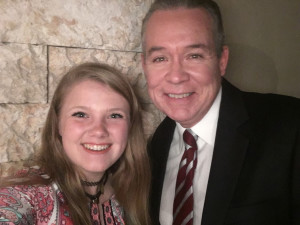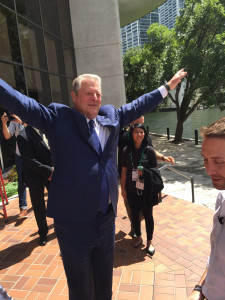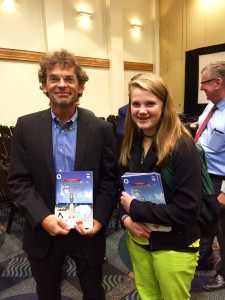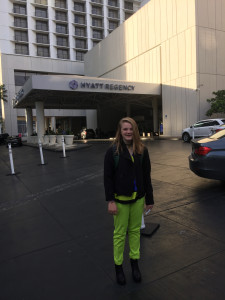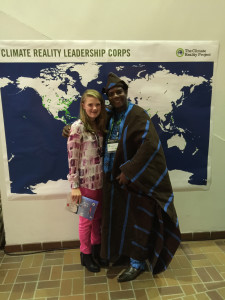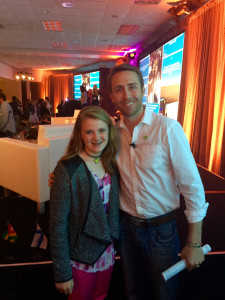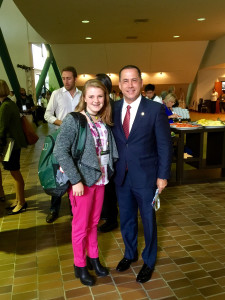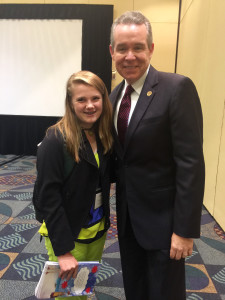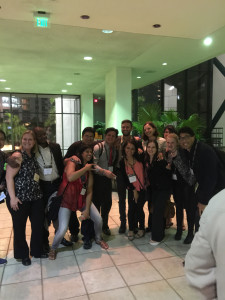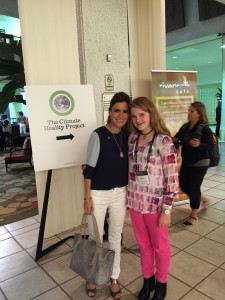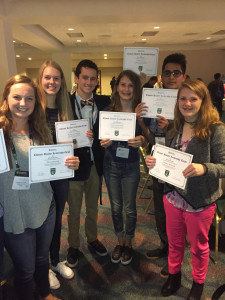Pale Blue Dot
Last Thursday Caroline Lewis and the CLEO Institute held its Annual Celebration at Coconut Grove’s The Kampong, the former bayside home of explorer-botanist and Miami pioneer Dr. David Fairchild. The evening was lovely and included a silent auction, live music, food and fun in one of South Florida’s most special places.
And there can be little doubt that the cool, clear weather we enjoyed was influenced by the night’s keynote speaker, my fellow CLEO Board member John Morales, the esteemed, Emmy Award winning Chief Meteorologist for NBC-6 Miami.
John is most certainly one of my climate heroes and frequently helps educate his viewers about what is undeniable to those of us who call South Florida home; our climate is warming and the ocean that’s all around us is rising.
So on this, a weekend of the King Tides, I am honored to share John’s entire speech as a guest blog with you and believe its message is befitting to anyone concerned about our planet’s future and whether places like South Florida will even have one.
Pale Blue Dot
It’s been 40 years since NASA’s Voyager launched on a mission to encounter and study the giant planets of our solar system, and then head out into interstellar space. On board Voyager is the famed Golden Record with salutations from Earthlings to the universe, international music and images of life on Earth. I’m very fortunate to have attended a “Voyager at 40” celebratory panel at Cornell University – home of the Golden Record and one of its creators, famed but now deceased astronomer, author and TV host Carl Sagan. As I sat at Bailey Hall two weeks ago listening to Sagan’s widow Ann Druyan, I found inspiration for my address to you tonight. Ms. Druyan said that if Carl Sagan were alive today, he’d would still be working, searching, and seeking answers to the one question that was dearest to his heart: “Whether or not we are going to get our act together as a species and protect the life on this world.”
Perhaps nothing embodies the urgency of what us humans, as the dominant species on the planet, need to do to save Earth than Carl Sagan’s Pale Blue Dot, written after Voyager’s cameras were turned around to look back on Earth from 4 billion miles away. It’s the image you’re seeing [above]. Please, listen, and be inspired by this excerpt of Sagan’s words:
“Look again at that dot. That’s here. That’s home. That’s us. On it everyone you love, everyone you know, everyone you ever heard of, every human being who ever was, lived out their lives. The aggregate of our joy and suffering, thousands of confident religions, ideologies, and economic doctrines, every hunter and forager, every hero and coward, every creator and destroyer of civilization, every king and peasant, every young couple in love, every mother and father, hopeful child, inventor and explorer, every teacher of morals, every corrupt politician, every “superstar,” every “supreme leader,” every saint and sinner in the history of our species lived there-on a mote of dust suspended in a sunbeam.”
The Earth is a very small stage in a vast cosmic arena. Think of the rivers of blood spilled by all those generals and emperors so that, in glory and triumph, they could become the momentary masters of a fraction of a dot. Think of the endless cruelties visited by the inhabitants of one corner of this pixel on the scarcely distinguishable inhabitants of some other corner, how frequent their misunderstandings, how eager they are to kill one another, how fervent their hatreds.
Our posturings, our imagined self-importance, the delusion that we have some privileged position in the Universe, are challenged by this point of pale light. Our planet is a lonely speck in the great enveloping cosmic dark. In our obscurity, in all this vastness, there is no hint that help will come from elsewhere to save us from ourselves.
The Earth is the only world known so far to harbor life. There is nowhere else, at least in the near future, to which our species could migrate. Visit, yes. Settle, not yet. Like it or not, for the moment the Earth is where we make our stand.” – end quote
But what a challenge that is – making our stand on Earth! That’s why when the Paris Agreement – with all its virtues and flaws – was signed almost 2 years ago, it was celebrated as a monumental achievement! Previous post-Kyoto attempts to reach a global agreement on limiting greenhouse gas emissions had failed, including quite infamously in Copenhagen. One of the biggest flaws cited for the Paris Accord is that the agreement is non-binding. And we have the United States to blame for that, as negotiators at the 21st Conference of Parties or COP21 knew that America would never ratify a binding agreement given the present-day make up of the U.S. Congress. But with carbon dioxide concentrations near 400 parts per million (a value not seen on Earth in 800 thousand years, well above the pre-industrial level of 280 PPM, plus surging at the fastest pace ever evidenced) and the accelerating, palpable changes in climate and weather patterns already occurring around the globe, delegates in Paris knew how urgent the task at hand was. The goal of Paris is to keep the total, call it, unnatural warming to 2 degrees Celsius, or even a degree and a half if possible.
There are some positive signs: nearly 20 countries had their greenhouse gas emissions peak 20 years ago – including Germany, Norway and Russia. Others like the U.K., France and the first Latin American country to do so – Costa Rica – reached peak-carbon in the year 2000 or earlier. Even the U.S. and Canada got there in 2007! In total, about a quarter of the countries around the globe have seen their emissions peak, representing 36 percent of current global emissions. Another 8 countries representing 23 percent of emissions have commitments to peak in the next decade, including Japan and China. If all this happens, global emissions would stay relatively flat through 2100 and the world would STILL warm around 3 degrees C. So we’re not there yet, despite Paris, which is under attack from the administration in Washington – among other things they’re attacking. To have a good chance of avoiding 2C of warming, global emissions need to peak sometime in the next few years and decline rapidly thereafter. THAT is the global, urgent challenge when it comes to mitigating the injection of greenhouse gases into the atmosphere.
Meanwhile, in this country, standing up for Mother Earth calls for us to be more involved than we’ve ever been! The ability for ALL, not just humans, but the other species that share our space, to breathe unpolluted air and drink or swim in uncontaminated water is under attack. The American public, who struggles with the most elemental science and geography questions, has been duped into believing that no consensus exists regarding global warming, thanks to a decades-long, deliberate, and persistent misinformation campaign by Big Oil, other special interests, and their satellite “think tanks” such as the Heartland Institute, which just this year mailed out hundreds of thousands of packets with misleading literature to American teachers, including a book titled “Why Scientists Disagree on Global Warming”. While there’s been some progress in recent years, thanks in good part to the extreme weather events we’re all witnessing, a significant percentage of Americans still think that funding research or solutions to the climate change problem is a worthless waste of taxpayer money, or that heading down that path will lead to a lower standard of living.
Sadly, my adopted industry – broadcast media and journalism – has been complicit to these special interests, perhaps unknowingly so, but complicit nonetheless, by providing a platform on equal footing for the so-called skeptics – which are better described as science deniers. You see, journalists are trained to present both sides to every news story. They seek to present balanced news (I’ll leave the word FAIR out of this discussion for now). And while that’s the essence of journalism – it simply does not apply when it comes to science! The scientific method leads to unequivocal answers. You observe, you experiment, and you either prove or disprove a hypothesis.
There are no two sides to the gravity story, to the general relativity story, or to the story that smoking cigarettes causes cancer.
There’s no second side to the story of global warming, which as you know has been described by the IPCC as “unequivocal”. The IPCC has also concluded that the human influence on the climate system is “clear”, and that recent climate changes have had widespread impacts on the human and natural systems.
But to this day, I have newsroom managers telling me that if I don’t seek an “alternate viewpoint” to a climate-change related TV report, then it will not air.
This journalistic problem has been well documented, and it has a name: it’s called false balance. Journalists, in their zeal to be fair, presenting each side of a debate as equally credible, even when the factual evidence is stacked heavily on one side. This false equivalency issue has cost us dearly in this country, as American voters have failed to understand the urgency of the climate change challenge.
Climate change falls quite low on the rankings of things voters worry about, and therefore politicians are rarely being judged on their positions regarding global warming.
That’s where CLEO comes in. We are the only non-profit organization in Miami solely dedicated to climate change education, engagement and advocacy. I got hooked on CLEO when I attended one of their training sessions at the University of Miami years ago, and I understood that a grass-roots effort such as this is what we need, not just in Miami but all around the country! We can build climate literacy by educating communities and their leaders on the science of climate change from the bottom up! Once educated on the science, individuals, communities, voters, can embrace the urgency to Act on Climate!
It’s been 21 years since Carl Sagan died, and I believe we have yet to answer his challenge for us to “make our stand” on Earth, or FOR Earth.
What will YOU do?
If we continue down this path and our climate continues to destabilize, and our seas continue to rise, will you be able to tell your grandchildren and great-grandchildren that you tried with all your might to change the course of humankind, from the bottom up!
The times we live in today can generously be described as “challenging”.
To me, this is a time, like no other, to be courageous, and to act!
Thank you John for helping educate countless people about our climate crisis, your service to the CLEO Institute and for allowing me to share your thoughts, and Dr. Sagan’s, in today’s Guest Blog here at The Sink or Swim Project. To learn more about John Morales, please visit https://www.nbcmiami.com/on-air/about-us/John-Morales.html and to learn more about The CLEO Institute, please visit https://www.cleoinstitute.org.
